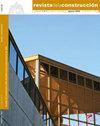螺旋焊接钢柱性能分析研究
IF 1.4
4区 工程技术
引用次数: 0
摘要
螺旋焊管(SWT)构件在管道工业中主要用于海上石油和天然气运输。随着新兴的定性研究,swt在建筑中的应用越来越受到关注。在制造中,SWT列没有参数限制。然而,对于螺旋角对作为构件的SWT柱的影响,目前还没有专门的研究。这项研究的重点是了解不同螺旋角的SWT柱的行为。通过对72根SWT柱的有限元模型进行分析,研究了长径比(L/D)、径厚比(D/t)和螺旋角对承载力的影响。文献中两列SWT的测试结果用于验证所开发的有限元模型。此外,根据标准规范计算了柱的承载力,并与有限元计算结果进行了比较。所有柱都进行了轴向压缩,并模拟了柱的屈曲和后屈曲行为。讨论了柱的初始刚度和延性指标。螺旋角在40°~ 50°之间,效果最好。本文章由计算机程序翻译,如有差异,请以英文原文为准。
Analytical study on the behavior of spirally welded steel columns
Spirally welded tube (SWT) members are predominantly used for offshore oil and gas transportation in the pipeline industry. The use of SWTs in construction is gaining attention with emerging and qualitative research. SWT columns have no parametric limitation in manufacturing. However, no specific research is available for the influence of helix angle in SWT columns as structural member. This investigation stresses on understanding the behavior of SWT columns with different helix angles. Seventy-two finite element (FE) models of SWT columns have been analyzed to study the influence of length to diameter (L/D) ratio, diameter to thickness (D/t) ratio and helix angle on the load-carrying capacity. Test results of two SWT columns available in the literature are used for validating the developed FE model. In addition, the capacity of the columns based on standard codes is computed and compared with the FE results. All the columns are axially compressed and the buckling and post-buckling behavior are simulated. Initial stiffness and ductility index of the columns are discussed. Helix angle between 40° to 50° are found to show the best results.
求助全文
通过发布文献求助,成功后即可免费获取论文全文。
去求助
来源期刊

Revista de la Construccion
工程技术-工程:土木
CiteScore
2.30
自引率
21.40%
发文量
0
期刊介绍:
The Journal of Construction is aimed at professionals, constructors, academics, researchers, companies, architects, engineers, and anyone who wishes to expand and update their knowledge about construction. We therefore invite all researchers, academics, and professionals to send their contributions for assessment and possible publication in this journal. The publications are free of publication charges.
OBJECTIVES
The objectives of the Journal of Construction are:
1. To disseminate new knowledge in all areas related to construction (Building, Civil Works, Materials, Business, Education, etc.).
2. To provide professionals in the area with material for discussion to refresh and update their knowledge.
3. To disseminate new applied technologies in construction nationally and internationally.
4. To provide national and foreign academics with an internationally endorsed medium in which to share their knowledge and debate the topics raised.
 求助内容:
求助内容: 应助结果提醒方式:
应助结果提醒方式:


